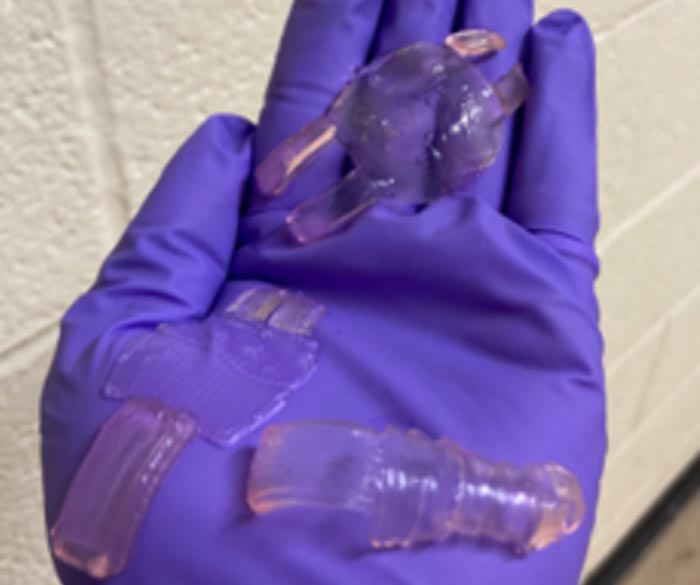

Gel robots feel like gummy bears.
Credit: Aishwarya Pantula/Johns Hopkins University
Creators envision ‘gelbots’ crawling through human bodies to deliver medicine.
A new gelatinous robot that crawls, powered by nothing more than temperature change and clever design, brings “a kind of intelligence” to the field of soft robotics.
The inchworm-inspired work is detailed today in Science Robotics.
“It seems very simplistic but this is an object moving without batteries, without wiring, without an external power supply of any kind – just on the swelling and shrinking of gel,” said senior author David Gracias, a professor of chemical and biomolecular engineering at Johns Hopkins University. “Our study shows how the manipulation of shape, dimensions and patterning of gels can tune morphology to embody a kind of intelligence for locomotion.”
Robots are made almost exclusively of hard materials like metals and plastics, a fundamental obstacle in the push to create if not more human-like robots, than robots ideal for human biomedical advancements.
Water-based gels, which feel like gummy bears, are one of the most promising materials in the field of soft robotics. Researchers have previously demonstrated that gels that swell or shrink in response to temperature can be used to create smart structures. Here, the Johns Hopkins team demonstrated for the first time, how swelling and shrinking of gels can be strategically manipulated to move robots forward and backward on flat surfaces, or to essentially have them crawl in certain directions with an undulating, wave-like motion.
The gelbots, which were created by 3D printing for this work, would be easy to mass produce. Gracias forsees a range of practical future applications, including moving on surfaces through the human body to deliver targeted medicines. They could also be marine robots, patrolling and monitoring the ocean’s surface.
Gracias hopes to train the gelbots to crawl in response to variations in human biomarkers and biochemicals. He also plans to test other worm and marine organism-inspired shapes and forms and would like to incorporate cameras and sensors on their bodies.
Authors included Aishwarya Pantula, Bibekananda Datta, Yupin Shi, Margaret Wang, Jiayu Liu, Siming Deng, Noah J. Cowan, and Thao D. Nguyen, all of Johns Hopkins.
The work was supported by: National Science Foundation (EFMA-1830893).
Journal: Science Robotics
DOI: 10.1126/scirobotics.add2903
Gelbots do ‘The Worm’ (VIDEO): https://www.eurekalert.org/multimedia/967899
Media Contact
Jill Rosen
Johns Hopkins University
jrosen@jhu.edu
Office: 443-997-9906
Cell: 443-547-8805












